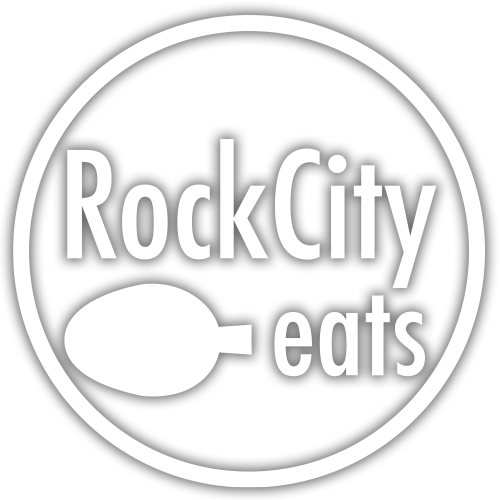My husband and I just returned from a month in Italy. We were based in Florence, in a small flat near the Palazzo Vecchio. We did, of course, eat meals at home, but we were also dining out a lot, and I’ll admit that after all my time abroad, touring and living and working, I still find eating out in a new place one of the most intimidating things about traveling in a foreign country.
It may not bother everyone, and I admire you if you can amble into a restaurant in Paris, make yourself comfortable and not think twice about standing out for un petit faux pas. But by nature, I like to blend in abroad, and, well, more fundamentally, I don’t like to make mistakes.
When you travel, you have to eat, and whether you go to a grocery store to buy food at locals’ prices (recommended in Norway, where a Big Mac is $17), eat at cheap canteens and cafeterias, or dine in posh white-table-cloth restaurants, you have to learn the unspoken customs, it seems, of each establishment. From Czech kavarny to Italian ristorantes, you mark yourself as l’etranger as soon as you enter with hesitation or do the “wrong” thing.
Of course, restaurants near the big tourist attractions are perhaps more accepting of the foreigner who doesn’t know whether to seat herself or that she has to pay her bill with the owner at the bar, but they aren’t foolproof.
In 1999, my husband and I took our first trip abroad together. I had already lived a year in Prague and mastered, as much as I could, the Czech dining customs, which weren’t as difficult in a city drowning in ex-patriots and where I had veteran English teachers at the university to show me the ropes. But neither of us had ever been to Italy.
In Venice, we stayed near Piazza San Marco, the Mecca of tourism if I’ve ever seen one. Honestly, once the cruise ships come in each day, I swore every person in the world was in “the drawing room of Europe,” that pigeon-bedecked expanse of stone and loggia sprawling out from St. Mark’s Basilica.
And those humans gotta eat. As we did, they probably tumble into one of the many restaurants, bars, pizzerias and snack shops around the square when the heat and their feet get the better of them.
Not too far from our hotel in the opposite direction was a lovely, quiet square that also included the church of Santa Maria Formosa and a number of restaurants, shops and a gelateria. The first night, we wandered that way to escape the madding crowds and found a little ristorante staffed by friendly waiters used to dealing with non-Italian speakers with pasta and pizza, as well as my personal comfort food, omelets, on the menu. It wasn’t fancy or fashionable, but we felt comfortable the moment we walked in and could relax and decompress from all the weariness of the hard-charging tourist’s day.
The next day, we tripped into a restaurant near St. Mark’s, hoping for the same experience. We were disappointed.
I don’t even remember now, 16 years later, what happened, but I do recall the ensuing Travel Crisis (that moment in which you want to pack it all in, literally, and GO HOME). The restaurant’s rude waiter made us so uncomfortable we left after ordering. On the way out I started crying: I felt so out of sorts, very hungry and out of anything close to my element. My husband suggested returning to the ristorante near Santa Maria Formosa, and we ate there for the second time in two days.
On our Venice weekend early this June, we ate there twice in three days, feeling just as comforted and welcomed as we did in 1999, this time with an extra soupcon of nostalgia.
This has become a frequent occurrence for us on our travels: We find somewhere we like, and we return to it. In Heidelberg, we ate at a pub called Zum Weissen Schwanen (The White Swans) three times in two days. During our time in Florence this year, we probably ate at the Ristorante Buca Poldo in our tiny little square eight or nine times in a month (one of the waiters waived the service charge and gave us limoncello every time!). On a solo trip to Paris in December 1999, I ate almost every night in the café (Parisian bar with food open all day) next to my hotel because I was often too tired to face a new place.
International travel has many things, but what it doesn’t have are frequent moments of comforting familiarity. And sometimes we just need that. So I have some tips for Rock City Eats readers vacationing abroad on navigating that minefield three times a day:
- We use guidebooks as our main source of food information. Rick Steves is very reliable for us as we like the same kind of restaurants he and his writers do. Find the guidebook that “gets” you and you’ll have a great place to start.
- Tipping and bill paying may be different than you’re used to and change from country to country. In Italy, Rick Steves advised a 10 percent tip, instead of our American 20-percent custom, but only if a service charge is not already on the bill, while in some countries, you may just round up for the tip. As far as paying goes, my friend Carrie and I were once chased down the street in Prague because we left our money for the bill on the table instead of paying the waiter directly.
- The place you’re staying may be a good source for information as well, but it depends on the hotel. Some hotels may refer you to restaurants based on partnerships they have with them, not on the quality of the food or the guest experience. In Venice last month, our innkeeper gave us great advice on breakfast venues that were tasty, inexpensive and friendly, but in Paris in the 1990s, our hotel clerk sent us to one of the most reviled national restaurant chains in the city.
- Don’t commit to anywhere you’re not comfortable when looking in and around the restaurant. If it doesn’t feel very welcoming then, you probably won’t be relaxed once you’re seated. We once walked for more than an hour all over Paris, from Left Bank to Right, until we found a place we were comfortable in the Marais. And to this day, that remains one of the best meals I’ve ever had in Paris.
- Most restaurants post their menus outdoors for you to peruse. If you have dietary issues or preferences (for example, my husband has to eat low-fat cuisine for health reasons), it’s best to know ahead of time if they offer what you can eat. Of course, this is a good way to check prices so you’re not frightened by the menu when you’re seated.
- Read your guidebook for the types of eating establishments at your destination, as they may have different prices and practices by what kind of place they are. At many cafes, you pay more if you get table service than if you stand at the bar. I once paid the equivalent of $7 for a Coke at an outdoor café in Paris because I didn’t know that sitting outside would add a lot of money to the final bill. I didn’t make that mistake again!
- Different establishments have different kinds atmospheres and open hours. In Italy, ristorantes generally open for lunch from noon to 2 or 3 and close again until dinner at 7. Other places are open all day. Again, this is another thing your guidebook can tell you about your destination.
- To be respectful, I try to speak as much in the language of the country I’m visiting as possible and learn how to ask for a table for two or for an English-language menu in the native tongue. They’ll know by your accent that you’re not a local and let you off the hook for speaking longer than you can in French, Italian, Norwegian or Czech, but it’s a nice way to start your time as their guest. I’ve pleasantly surprised a number of Prague waiters with my Menu-Czech skills…enough to get a free beer or two. That’s not something I was able to do in Beijing.
Now I have a few questions for you: What are your tips for dining abroad? What’s the best meal you’ve had in a foreign country? And, most importantly, do you have any restaurant recommendations for Shanghai and Hong Kong? I might be going there next year…





